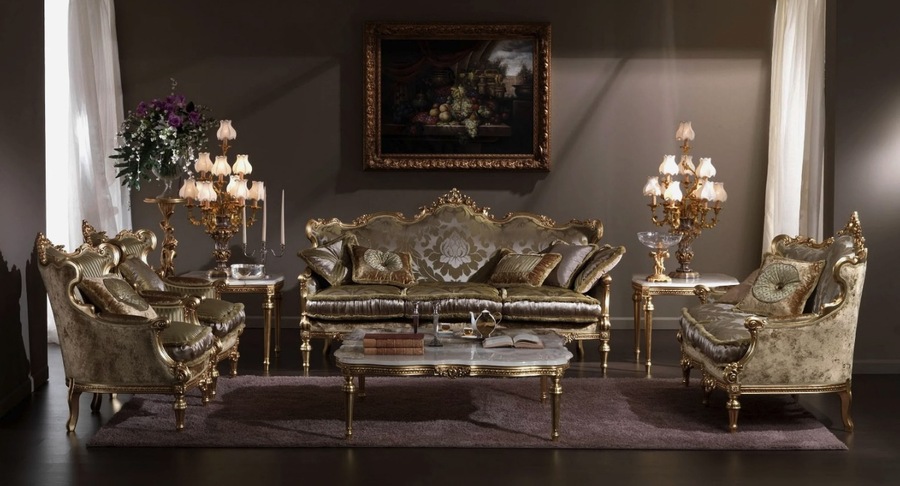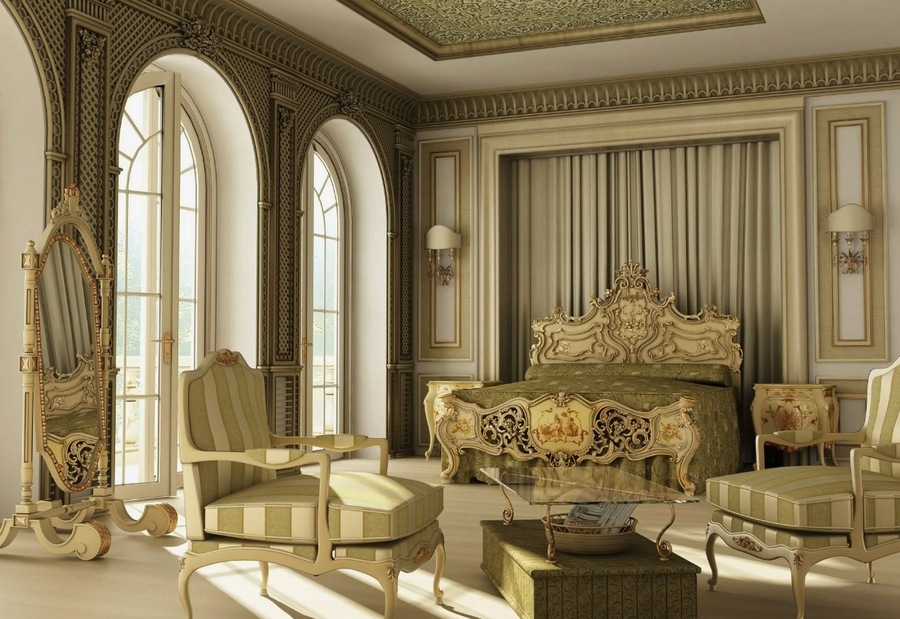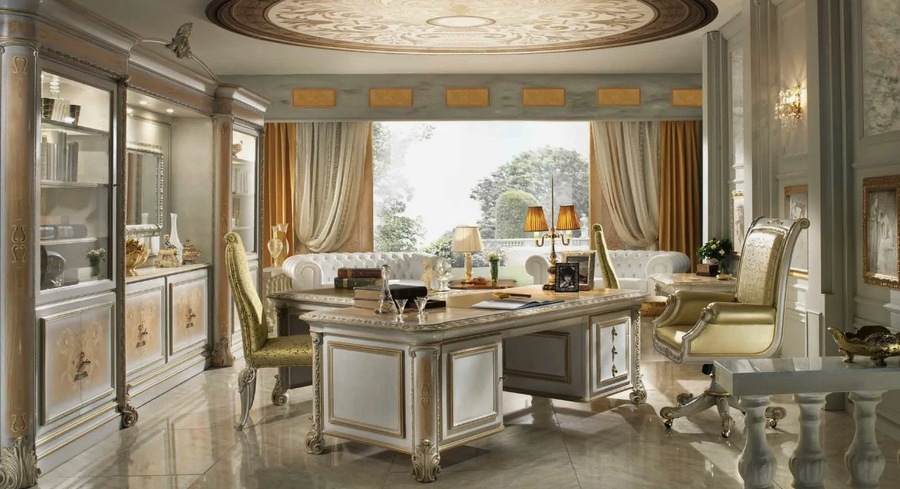It’s hard to imagine that everyday items like tables or cupboards once indicated luxury and high status. Today, furniture is used to decorate rooms, parks, gardens, and streets. It plays a crucial role in organizing environments in both residential and public places and is essential for events like birthdays or corporate gatherings. Rental Joy offers a wide range of furniture rentals for these occasions to ensure your event is perfectly furnished. Based on archaeological findings, the history of furniture dates back to ancient times when humans first began to create convenience in their humble dwellings. Early furniture included resting places made of hides, wooden decks, and cradles for babies made of wood. Unfortunately, none of this has survived to the present day. The oldest examples of furniture have been found in Egypt and date back to the third millennium BC.
Early Furniture in Ancient Egypt
Egypt, one of the oldest hotbeds of human civilization, managed to save the world a rich cultural heritage of the distant past, including furniture. The architecture of temple and palace complexes, writing on stone and papyrus, and the first knowledge of mathematics, medicine, science, and jewelry all point to the sophistication of ancient Egyptian society. In the royal burials of the dynastic era of 3400-2980 BC, archaeologists found conventional and folding wooden stools with legs made of elephant tusks and some fragments of ebony chests. In the burials of crowned persons of the second millennium BC, there were likenesses of modern beds and chairs.
The beds were rectangular wooden frames covered with golden shells, roped or strapped in the form of a net. Their fancy legs skillfully displayed the paws of animals like lions or wolves. Various chests were decorated with patterns of geometric shapes and inlaid with green and blue malachite, turquoise, and ivory. A special fashion for inlaying furniture was revealed during the reign of the XXIII dynasty (745-718 BC). Furniture in ancient Egypt was made of imported trees of strong species, characterized by special strength, rigidity, and functionality. Cedar, fig tree, yew, and olive tree wood were commonly used.

Furniture in Ancient Kingdoms
With the development of civilization and the emergence of new empires, new furniture elements were born. The history of furniture in Ancient Greece is known from sculptures and preserved images on vases. The Greeks made multifunctional chests, which were the interior’s main subject for a long time. The humid and hot climate of ancient India influenced a unique culture: people ate, sat, and slept on the floor. Only the interiors of noble palaces featured rollers, carpets, low backless chairs, and stools with openwork frames and seat cushions.
Ancient Greece
In Ancient Greece, furniture was simple yet functional, often reflecting the societal values of moderation and utility. Greek furniture included chests, couches (lines), and chairs (klismos), typically made of wood and adorned with minimal decoration. Chests were used for storage, doubling as seats or tables, while lines served as beds and places for reclining during meals. With its elegant curved backrest and splayed legs, the Klismos chair became an iconic piece that influenced furniture design for centuries.
Ancient India
The furniture in ancient India was influenced by the region’s climate and cultural practices. People commonly ate, sat, and slept on the floor, leading to a scarcity of high furniture. However, the palaces of the nobility featured luxurious items like carpets, low backless chairs, and stools with intricate openwork frames. Artisans used natural materials like stone, clay, shells, plant fibers, herbs, and trees to craft their furniture, showcasing their resourcefulness and creativity.
Ancient Rome
Ancient Romans, known for their fine artistic taste, reflected their sophistication in their homes’ decoration. They favored a variety of chairs and beds, often inlaid with precious stones and metals and decorated with skillful carvings. Roman artisans also used colored marble; the first wicker furniture made of willow twigs appeared during this time. By the beginning of the first millennium AD, some analogs of modern furniture had emerged.
Roman furniture was designed for comfort and luxury, reflecting the society’s wealth and opulence. The Romans developed various types of furniture, including the lectus (bed), Sella (chair), and mensa (table). The lectus was a versatile piece used for sleeping, reclining, and dining, often adorned with sumptuous textiles and cushions. Roman furniture was usually made of wood and metal, with intricate carvings and inlays of ivory, silver, and precious stones.
The Emergence of Upholstered Furniture
Objects resembling upholstered furniture appeared in ancient times. For example, Persian culture used elevations covered with carpets and cushions for resting and reclining. The inhabitants of Egypt and Greece also softened various seat models with cushions. By the middle of the 17th century, during the period of classicism, France introduced the first models of modern upholstered furniture. Initially, chairs and sofas were covered with simple fabric. As the layered clothing of aristocrats became lighter, sitting on hard seats became increasingly uncomfortable. Furniture began to be filled with sheep’s wool, horsehair, swan down, or dry grass.
The 17th century marked the beginning of upholstered furniture, with France leading the way in its development. The era of Louis XIV saw the rise of opulent furniture designs characterized by elaborate carvings, gilding, and luxurious fabrics. Upholstered chairs and sofas became more common, filled with materials like sheep’s wool, horsehair, and feathers for added comfort. This period also saw the introduction of the fauteuil, an armchair with upholstered arms and back, which became a staple in French interiors.
Furniture in the Renaissance and Baroque Periods
During the Renaissance, furniture design experienced a revival of classical forms and motifs. Italian artisans, in particular, excelled in creating furniture that combined beauty and functionality. The cassone, a large chest for storing valuables and dowries, became prominent in Italian homes. These chests were often elaborately decorated with paintings, carvings, and inlays, showcasing the skills of the artisans.
The Baroque period brought even more grandeur and opulence to furniture design. Furniture became larger, more ornate, and heavily adorned with carvings, gilding, and luxurious fabrics. This period saw the development of new furniture forms, such as the commode (a low chest of drawers) and the console table. The furniture of this era reflected the wealth and power of its owners, serving as a symbol of their status and taste.
Interesting Facts About Furniture
– In ancient Greece, women and children predominantly used benches, stools, and chairs, while men favored recliners and beds.
– According to legend, armrests on chairs appeared after an unpleasant incident at a pharaoh’s funeral, where a guest fell off an uncomfortable bench.
– In 1911, inventor Thomas Edison introduced concrete furniture, which remained unclaimed despite its durability and beauty.
– King Louis XIV of France and Navarre is known in furniture history as the owner of the largest collection of beds, totaling 413 pieces.
– The bar was invented in the Wild West to shelter bartenders from the bullets of disgruntled customers and bandits.
– In 2014, Russia manufactured a one-kilometer-long sofa that can accommodate 2,500 people at a time.
Furniture is so integral to our lives that it is hard to imagine what would happen if it disappeared. Everything we do—work, sleep, store things, eat—is connected with furniture; without it, daily life would be impossible. Even celebrations depend on furniture: where would you put treats if there were no tables, and how would you seat guests if there were no chairs? If you are in Dubai and decide to celebrate a holiday with many guests, you don’t have to buy furniture specifically for this! Contact Rental Joy to rent furniture and accessories for your party. For example, a child’s table and six chairs can be rented for only AED 180 daily.

Furniture in the Modern Era
The Industrial Revolution brought significant changes to furniture design and production. The advent of new manufacturing processes and materials made furniture more accessible and affordable. Mass production allowed for a greater variety of designs and styles, catering to a wider range of tastes and preferences. The 19th century saw the rise of styles like Victorian, which favored ornate and elaborate designs, and Arts and Crafts, which emphasized simplicity and craftsmanship.
In the 20th century, furniture design continued to evolve with movements like Art Deco, which introduced sleek, geometric forms and luxurious materials, and Modernism, which favored clean lines, minimalism, and functionality. Designers like Le Corbusier, Mies van der Rohe, and Charles and Ray Eames revolutionized furniture design with innovative and timeless creations.
Contemporary Furniture Design
Today, furniture design innovates and adapts to changing lifestyles and technological advancements. Sustainable and eco-friendly materials are becoming increasingly popular, reflecting a growing awareness of environmental issues. Designers are also exploring new technologies, such as 3D printing and smart furniture, which integrate technology into everyday items.
Contemporary furniture design is characterized by its diversity and versatility. From minimalist and functional designs to bold and eclectic styles, there is something to suit every taste and need. Furniture has become more than just functional items; it is an expression of personal style and a reflection of our lifestyles.
The Importance of Furniture in Our Lives
Furniture has evolved from luxury items to everyday essentials, deeply intertwined with human civilization’s progress and lifestyle. Its history reflects our continuous quest for comfort, aesthetics, and functionality. Furniture is vital in our daily lives, providing comfort, convenience, and beauty. It helps create functional and harmonious living spaces, supporting our activities and enhancing our well-being.
Whether a simple chair or an elaborate dining table, furniture is essential to our lives. It shapes our environments, influences our behaviors, and reflects our values and tastes. As we continue to innovate and evolve, furniture will remain a central element in our homes and public spaces, contributing to our comfort, happiness, and quality of life.

Surfer, foodie, record lover, Swiss design-head and ADC member. Performing at the sweet spot between simplicity and elegance to create not just a logo, but a feeling. Let’s chat.


